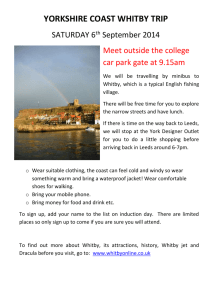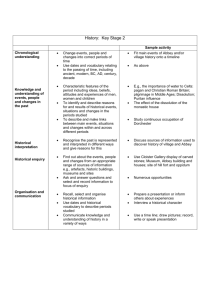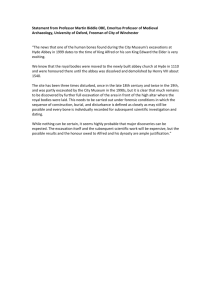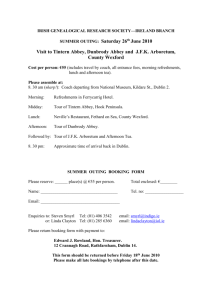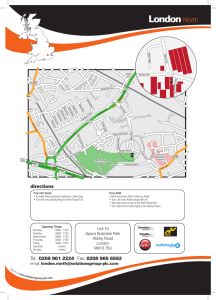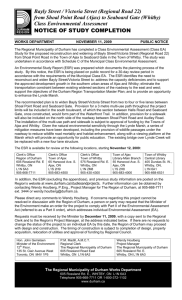ctime777_Whitby_St_Marys
advertisement
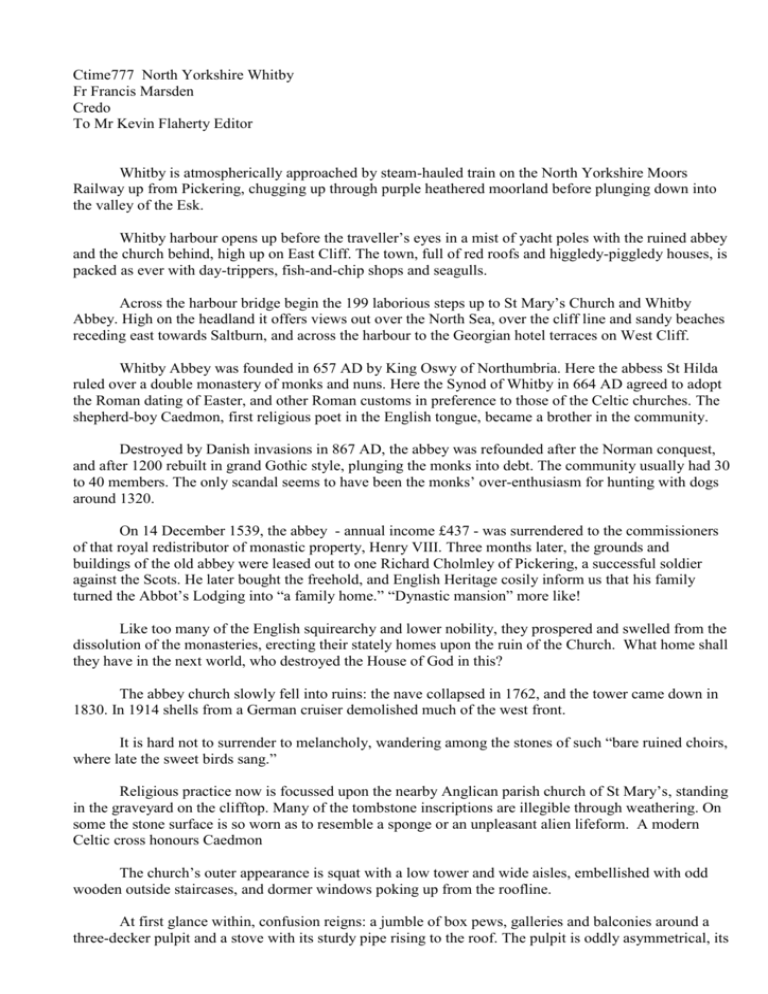
Ctime777 North Yorkshire Whitby Fr Francis Marsden Credo To Mr Kevin Flaherty Editor Whitby is atmospherically approached by steam-hauled train on the North Yorkshire Moors Railway up from Pickering, chugging up through purple heathered moorland before plunging down into the valley of the Esk. Whitby harbour opens up before the traveller’s eyes in a mist of yacht poles with the ruined abbey and the church behind, high up on East Cliff. The town, full of red roofs and higgledy-piggledy houses, is packed as ever with day-trippers, fish-and-chip shops and seagulls. Across the harbour bridge begin the 199 laborious steps up to St Mary’s Church and Whitby Abbey. High on the headland it offers views out over the North Sea, over the cliff line and sandy beaches receding east towards Saltburn, and across the harbour to the Georgian hotel terraces on West Cliff. Whitby Abbey was founded in 657 AD by King Oswy of Northumbria. Here the abbess St Hilda ruled over a double monastery of monks and nuns. Here the Synod of Whitby in 664 AD agreed to adopt the Roman dating of Easter, and other Roman customs in preference to those of the Celtic churches. The shepherd-boy Caedmon, first religious poet in the English tongue, became a brother in the community. Destroyed by Danish invasions in 867 AD, the abbey was refounded after the Norman conquest, and after 1200 rebuilt in grand Gothic style, plunging the monks into debt. The community usually had 30 to 40 members. The only scandal seems to have been the monks’ over-enthusiasm for hunting with dogs around 1320. On 14 December 1539, the abbey - annual income £437 - was surrendered to the commissioners of that royal redistributor of monastic property, Henry VIII. Three months later, the grounds and buildings of the old abbey were leased out to one Richard Cholmley of Pickering, a successful soldier against the Scots. He later bought the freehold, and English Heritage cosily inform us that his family turned the Abbot’s Lodging into “a family home.” “Dynastic mansion” more like! Like too many of the English squirearchy and lower nobility, they prospered and swelled from the dissolution of the monasteries, erecting their stately homes upon the ruin of the Church. What home shall they have in the next world, who destroyed the House of God in this? The abbey church slowly fell into ruins: the nave collapsed in 1762, and the tower came down in 1830. In 1914 shells from a German cruiser demolished much of the west front. It is hard not to surrender to melancholy, wandering among the stones of such “bare ruined choirs, where late the sweet birds sang.” Religious practice now is focussed upon the nearby Anglican parish church of St Mary’s, standing in the graveyard on the clifftop. Many of the tombstone inscriptions are illegible through weathering. On some the stone surface is so worn as to resemble a sponge or an unpleasant alien lifeform. A modern Celtic cross honours Caedmon The church’s outer appearance is squat with a low tower and wide aisles, embellished with odd wooden outside staircases, and dormer windows poking up from the roofline. At first glance within, confusion reigns: a jumble of box pews, galleries and balconies around a three-decker pulpit and a stove with its sturdy pipe rising to the roof. The pulpit is oddly asymmetrical, its middle level perhaps wide enough to accommodate three simultaneous preachers –Low Church, High Church and Broad Church? Above is the tester or sounding board, capped by ornamental woodwork culminating in a carved pineapple, which doubtless had some esoteric significance in its day. In Norman times this was a simple Catholic parish church with nave and aisles. All attention was focussed upon the altar of sacrifice. The Protestant “Reformation” has converted it into something alien. The re-arrangement demonstrates the eclipse of the Eucharistic sacrament. The pulpit became the central focus. As the town and port expanded, the church’s north wall was extended. Balconies were installed all around the nave and transepts and aisles, for the crowds who flocked to hear the sermons. The chancel and communion table were eventually obscured from most areas of the church. The box pews still bear family names and are mortice-locked to prevent the casual pray-er from occupying them. The Church Maid used dutifully to cover the privately rented pews with drapes after each Sunday service – so that chimney smuts from the lower-class cottages below would not settle upon the upholstery and blacken the finest Sunday raiment of the more worthy. The Cholmleys, as the most prominent local family, must have the most prominent pew. No mere pew indeed, but a grandiose balcony decorated with cherubic heads and wings, elevated upon spiral columns with Corinthian capitals. It straddles and obscures the chancel arch, effectively hindering a view of the communion table. In such manner were the noble Cholmley scions raised higher than the preacher himself, even were he to expound the Godly word from his highest dais. As they sat behind him, gazing out over their grateful tenants and townsfolk, their exalted altitude expressed their superiority over all and sundry. Their balcony carried a clock (surely not to time the preacher?). Highest of all on the wall behind, the arms of Her Majesty Queen Victoria asserted the Royal Supremacy. Whereas the medieval church would have had side altars, statues of the virgin and the saints, stained glass windows and wall paintings, Georgian Anglicanism abhorred such hagiolatry. Should the mind of the lowly ploughman or member of the serving classes wander from the inspired oratory of the preacher, he would find no saint, no Bible episode, no icon or picture to seduce his subject soul, but sober grey wooden plaques of admonition bearing simply the ten commandments and two quotations: “What man is he that desireth life and loveth many days that he may see good. Keep thy tongue from speaking evil and thy lips from speaking guile.” Heaven forfend lest we have subversive muttering against the divine order of “the rich man in his castle, the poor man at his gate.” Anyone diabolically moved to disagree with the preacher was warned: “If they hear not Moses and the prophets neither wil (sic) they be perswaded though one rose from the dead. Take heed therefore how you hear.” Georgian religion substituted this veneration of the local aristocracy and squirearchy for devotion to those superstitious Papist medieval saints, who had locked themselves away unhealthily in convents to feign mystical raptures and conjure miracles. The jumble of side altars was effectively replaced by a series of classical urns and veils, dedicated to the town’s worthy and wealthy, in a style reminiscent of ancient Roman senators. Thus, robbed of saints to inspire his simple soul, the poor layman might still aspire to be like his social betters, by studying their funerary monuments: “Peregrine Lascelles, General of all and Singular his MAJESTY’s Forces who Served his Country from the Year 1704. In the reign of QUEEN ANNE he Served in Spain and in the battles of Almanara, Saragossa and Valleviciosa. Performed the Duty of a brave and Gallant Officer. In the Rebellion of the Year 1715 he Served in Scotland: and in 1745 after a fruitless exertion of his spirit’s ability at the disgraceful rout of Prestonpans, he remained forsaken on the field….he dyed 1772 in the 88th year of his age. In short an HONEST MAN.” If the army wasn’t your vocation, other paths too might lead to high office: “Aaron Chapman Esquire… Extensively engaged in maritime pursuits. In 1816 he was elected an elder brother of the Trinity House London and in 1832 the first Member of Parliament for the borough of Whitby.” Science offered an alternative route to sanctity and eternal memory. Seated in honour in the sanctuary is the Scoresby chair, carved with ropes and anchors, commemorating Rev. William Scoresby DD FRS, presented by his influential friends in the Port of Liverpool. An impressive character, he circumnavigated the globe and in 1856 published researches into the laws of magnetism. Evidently a scientific type of piety of which even Richard Dawkins might approve. Few churches celebrate the Protestant triumph of the written word of the Bible - and of the local squirearchy - over the living Jesus of the Eucharist, more profoundly than St Mary’s. The Anglo-Catholic revival has attempted to re-highlight the altar, but this is hardly possible without removing all the period furniture. In 1907 Kempe renewed the Norman chancel with altar and altar rails for communicants, retaining the medieval aumbry and lavabo and a possible wall tabernacle. He added stained glass to the east windows - the Crucifixion with Mary and St John. Time moves on, and visitors’ preoccupations also move on in unusual directions. A plaintive notice on the information desk reads: “Sorry, we don’t know where Captain Cook sat when he was an apprentice. And – No! Dracula never was here!” Those who now seek spiritual thrills in Whitby seem to be the Dracula-wannabees, who frequent its Goth regalia shops. Well, said the multi-faith ecumenical chaplain, it’s all spirituality, isn’t it?
